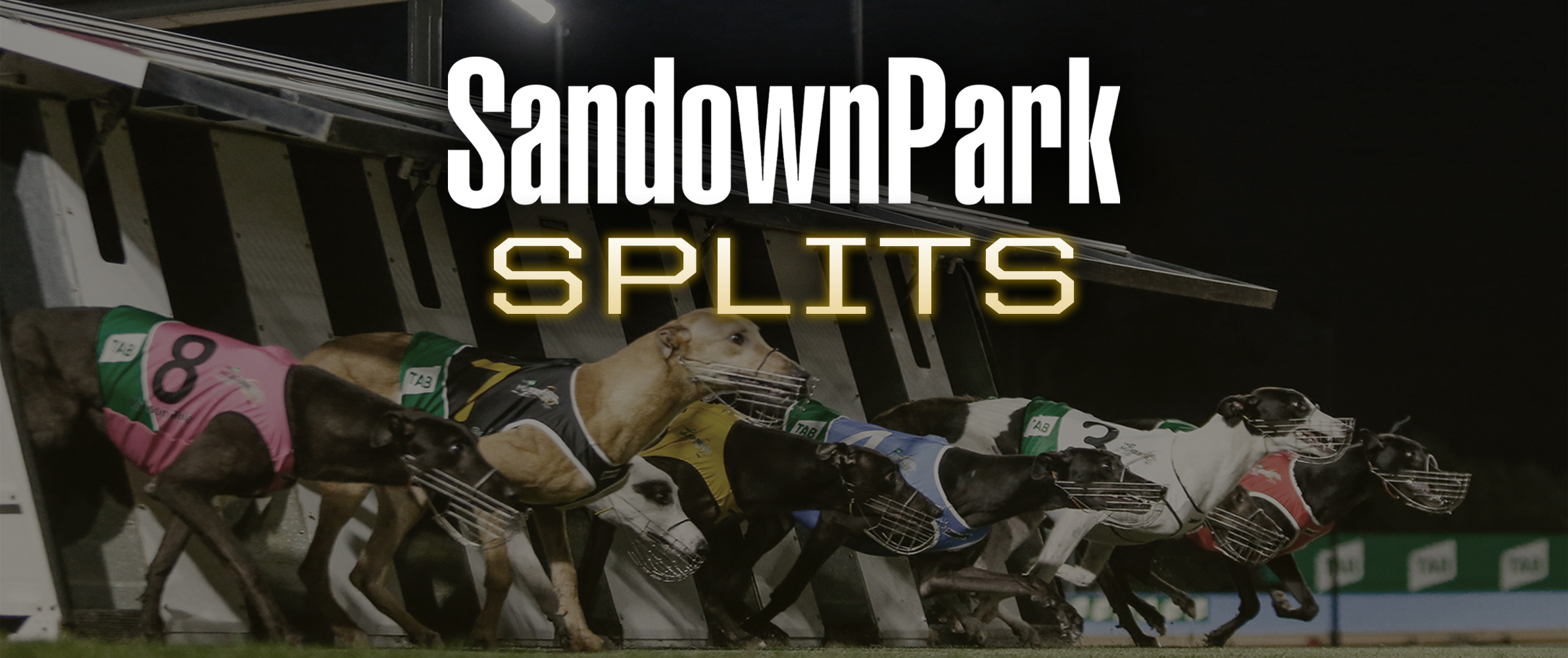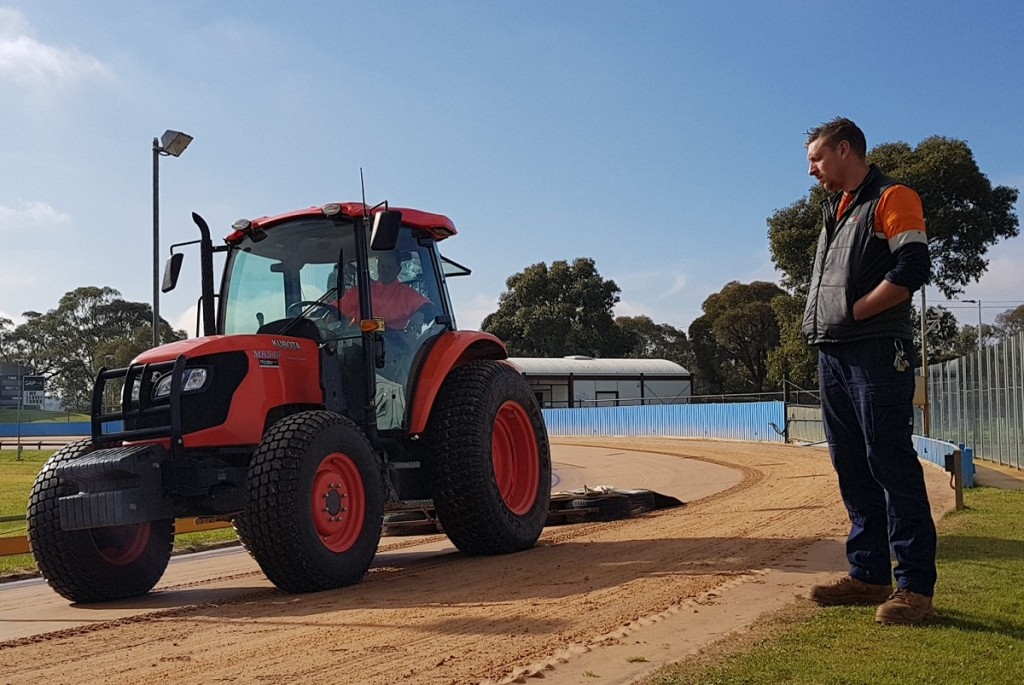It was all hands-on deck early this week as Sandown’s ground staff completed the annual track renovation.
While a strict weekly maintenance schedule is followed throughout the year to ensure the surface is of a safe and consistent standard, track sand is washed away from the track over time and periodically needs to be replaced.
During the renovation works, more than 30 tons of filtered Burrumbeet sand is added to the track before it is graded, harrowed and rolled in, while the lure cable and drive wheel is also replaced. The works ensure the track is at its very best in terms of safety and consistency ahead of what is an exceptionally busy period track in the second half of 2018.
“We’d normally do the works a little later in the year but with the Nationals in August, followed by the next Speed Star event in September and the Melbourne Cup carnival in November we’ve had to do it a little earlier this year,” said track curator Brett Skurrie (pictured, above).
Planning for the works begins several weeks earlier. Sand needs to be ordered, a grader booked and staff organised. The works are led by Skurrie, now in his third year in the role, and conducted in conjunction with Greyhound Racing Victoria’s Track Maintenance Specialist and former Sandown track curator Adam Bailey. Rain on the day of the works or in the days following make the renovation unpractical, so a keen eye is kept on the Bureau of Meteorology website and is postponed should the forecast change.
Fortunately, the weather Gods were kind and works began as scheduled on Monday morning. At 5.30am the lure cable is removed before works on the track surface begin in earnest.
“It’s nice and dark at 5.30am,” said Skurrie with a laugh.
“We start by taking the lure cable out and changing over the drive wheel. While that is going on, I do a lap of the track with Ken, the grader operator, noting where the high and low spots are and where the sand needs to go.
“Trailer loads of sand is dropped on the track and I work with Ken matting it out and grading it to even out the high and low spots. Once we’re happy with it, I run the harrows through to mix the new and old sand so that it is completely blended in. If you don’t, you end up with two layers of sand that can shift away and cause problems later on.
“While the surface is soft we can move it around pretty easily, so we blade it again to the surface is level and then start rolling it in. This firms up the surface ready for racing and trialling.
“By 4pm, we’ve finished rolling it in, then we put 9000 litres of water from the water cart onto the track, and hand hose it to make sure it’s completely flooded. The water acts as a binding agent and holds it all together.”
It takes four staff members around 12 hours to complete the works and the surface will be continued to be rolled in over the ensuing days to have the surface ready for racing on Thursday. However, trainers and punters are advised that times are likely to be a couple of lengths ‘off’ this Thursday evening.
“Everything has gone really well and the weather should be fine, but I reckon it’ll probably be three or four lengths off on Thursday but should be back to normal by the weekend.”
The next feature event at Sandown Park is the $56,000 group 2 McKenna Memorial (595m). The heats will be run on Thursday 5 July.
Paw note: Sandown Park has an advanced water recycling system that primarily uses a combination of reclaimed water from the track and surrounding grounds, rain water and desalinated bore water, reducing the club’s need for potable water even during the summer months



